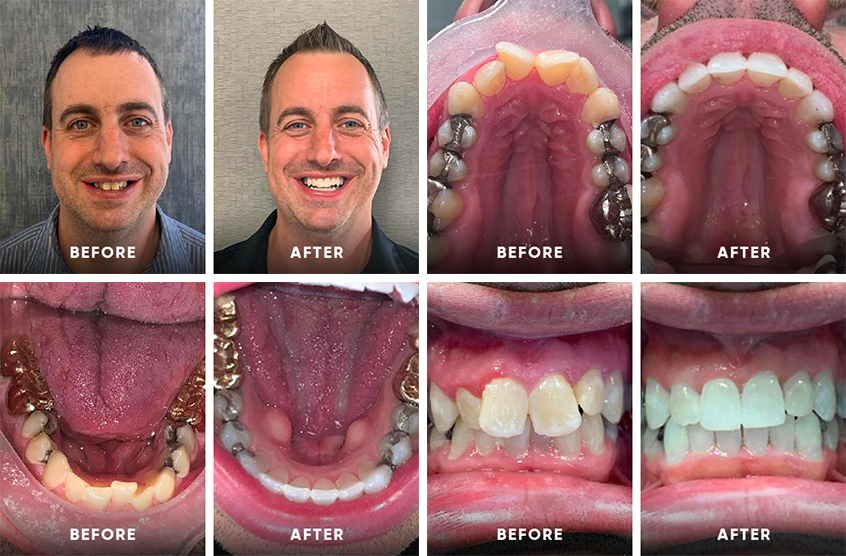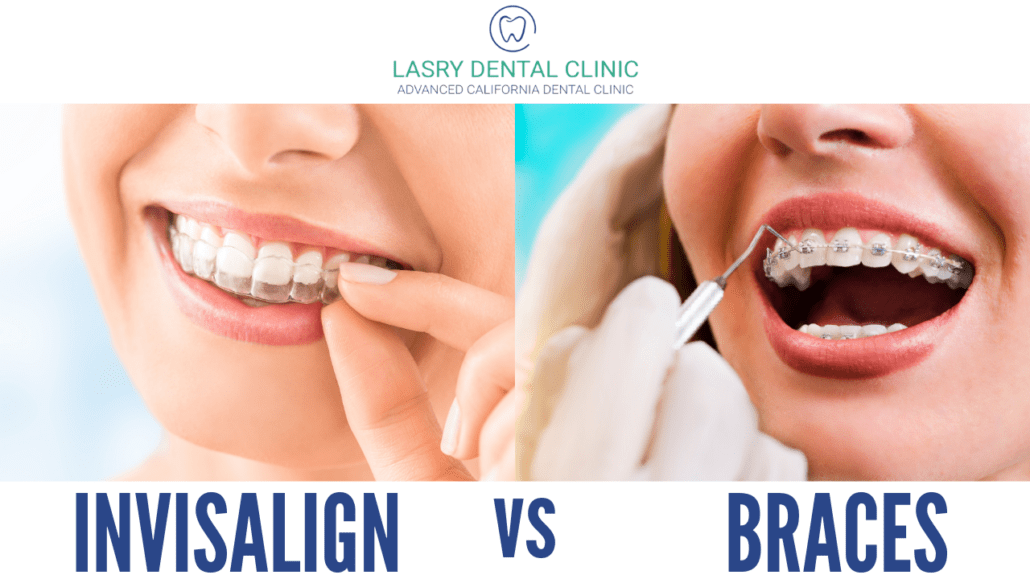Preserving Oral Health While Utilizing Invisalign: Tips for a Smooth Experience
Preserving Oral Health While Utilizing Invisalign: Tips for a Smooth Experience
Blog Article
Invisalign vs. Traditional Braces: Which Choice Is Right for You?
When taking into consideration orthodontic therapy, the option in between Invisalign and conventional braces offers several vital variables that warrant cautious examination. Invisalign supplies a very discreet choice with removable aligners, while traditional braces give a much more noticeable yet efficient service for extreme imbalance.
Introduction of Therapy Choices

In contrast, standard braces contain steel braces and cables that are bonded to the teeth. This method applies continuous stress in time to attain positioning. While efficient for complicated orthodontic issues, typical dental braces call for normal visits for adjustments and can pose challenges in keeping oral health because of the difficulty of cleansing about wires and braces.
Both options have their benefits, and the option typically rests on specific oral conditions, way of living preferences, and client conformity. Inevitably, getting in touch with an orthodontic professional is critical for determining one of the most suitable treatment plan tailored to private requirements. Recognizing the nuances of each choice can significantly influence the total success of orthodontic treatment.
Visual Factors To Consider
A significant variable influencing the selection between Invisalign and conventional braces is the aesthetic appeal each therapy uses. Invisalign aligners are crafted from clear plastic, making them essentially invisible when put on. This very discreet look is particularly appealing to young adults and adults that may really feel uneasy concerning their orthodontic treatment. The capability to maintain an all-natural smile throughout the alignment process can considerably improve the individual's self-confidence in professional and social settings.
In contrast, traditional dental braces include steel brackets and wires, which can be much more obvious. While developments in orthodontic technology have actually caused the development of smaller sized brackets and colored elastics, standard braces still preserve an even more noticeable account. For some people, the presence of dental braces might deter them from looking for required treatment.
Ultimately, the option in between Invisalign and standard dental braces might depend upon personal preferences relating to appearances. Clients who focus on discernment often lean toward Invisalign, while those who are much less worried regarding visibility might choose traditional braces. Recognizing the aesthetic implications of each alternative is essential for making an informed choice that lines up with one's lifestyle and choices.
Convenience and Convenience

In terms of benefit, Invisalign aligners are detachable, enabling patients to enjoy their preferred foods without restriction and maintain optimum oral hygiene. Brushing and flossing are streamlined, as the aligners can be gotten throughout these routines, whereas typical braces need read review careful steering around brackets and cables.
In contrast, standard braces require normal modifications, making them less convenient for those with hectic timetables. On the whole, the comfort and convenience of Invisalign make it an attractive option for numerous people seeking orthodontic therapy.
Treatment Duration and Performance
While both Invisalign and standard dental braces are efficient in dealing with oral misalignments, the period of therapy can vary dramatically in between both choices. Usually, Invisalign therapy can take anywhere from 12 to 18 months, relying on the complexity of the instance. The clear aligners function by progressively shifting teeth right into their preferred settings, and regular follow-ups with an orthodontist help ensure progress continues to be on track.
In contrast, standard dental braces often need a longer dedication, typically ranging from 18 months to three years. This is due to their fixed nature and making use of cables and brackets, which can be a lot more effective for intricate instances and severe imbalances (Invisalign). The treatment effectiveness of standard dental braces is well-documented, as they permit specific changes and higher control over tooth activity
Ultimately, the choice between Invisalign and conventional braces might rest on both the anticipated therapy duration and the particular oral concerns handy. Consulting with an orthodontist is vital, as read this article they can give tailored recommendations based on private demands, making sure the picked approach straightens with preferred timeframes and end results.
Price Contrast and Insurance Coverage Options
Cost plays a substantial function in the decision-making process for individuals taking into consideration orthodontic treatment, whether selecting Invisalign or conventional braces. On average, the price of Invisalign varieties from $3,000 to $8,000, while standard dental braces generally set you back in between $2,000 and $6,000. Aspects affecting these costs consist of the intricacy of the situation, the period of therapy, and geographical area.
Insurance policy coverage can substantially influence out-of-pocket expenditures. Numerous oral insurance coverage plans provide partial coverage for orthodontic treatments, however the specifics can differ widely. It is important for clients to examine their insurance coverage to identify the level of insurance coverage for either option. Normally, conventional braces may be much more frequently covered by insurance plans compared to Invisalign, which some insurers classify as an aesthetic procedure.
In addition, numerous orthodontic techniques provide versatile repayment plans, making both therapy options extra available. Clients need to ask about possible financing alternatives and discounts for upfront settlements. Assessing the overall cost, including insurance advantages and repayment plans, is crucial for making an educated decision that aligns with both aesthetic choices and spending plan factors to consider.

Final Thought
In summary, the option in between Invisalign and traditional dental braces rests on multiple factors, including visual choices, comfort, treatment period, and cost. Invisalign provides a discreet, detachable choice that promotes oral health additional info and nutritional versatility, while conventional braces may be better for intricate dental concerns and typically come at a reduced cost point. Eventually, assessment with an orthodontist is important to assess specific scenarios and identify one of the most appropriate therapy choice for achieving ideal dental alignment.
When taking into consideration orthodontic therapy, the selection between Invisalign and traditional dental braces provides a number of vital variables that warrant mindful evaluation.Comparing Invisalign and typical dental braces exposes unique treatment alternatives for orthodontic adjustment.While both Invisalign and standard dental braces are effective in remedying oral imbalances, the duration of therapy can differ dramatically in between the two choices.Expense plays a substantial role in the decision-making procedure for individuals taking into consideration orthodontic therapy, whether deciding for Invisalign or conventional braces.In recap, the selection in between Invisalign and typical braces hinges on numerous factors, consisting of visual choices, comfort, treatment duration, and price.
Report this page